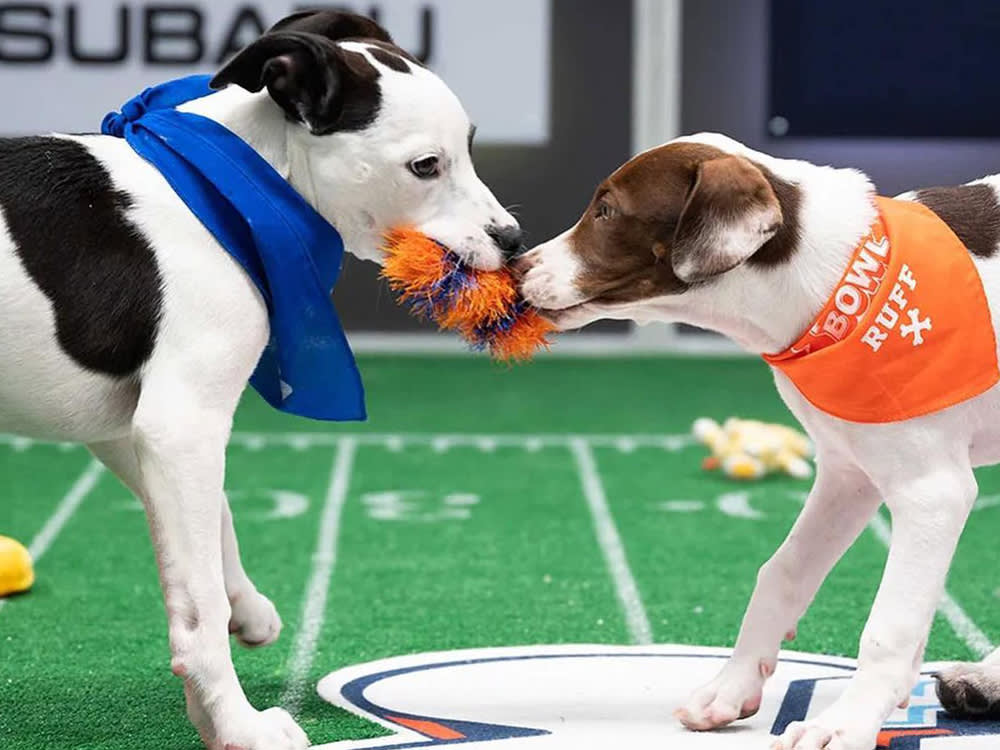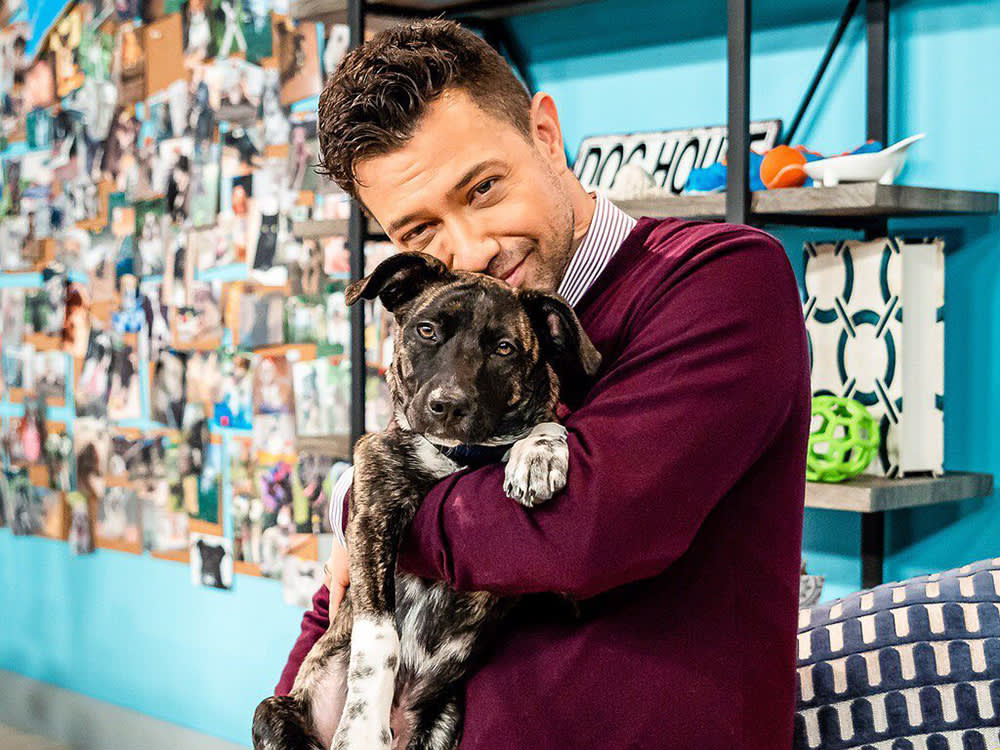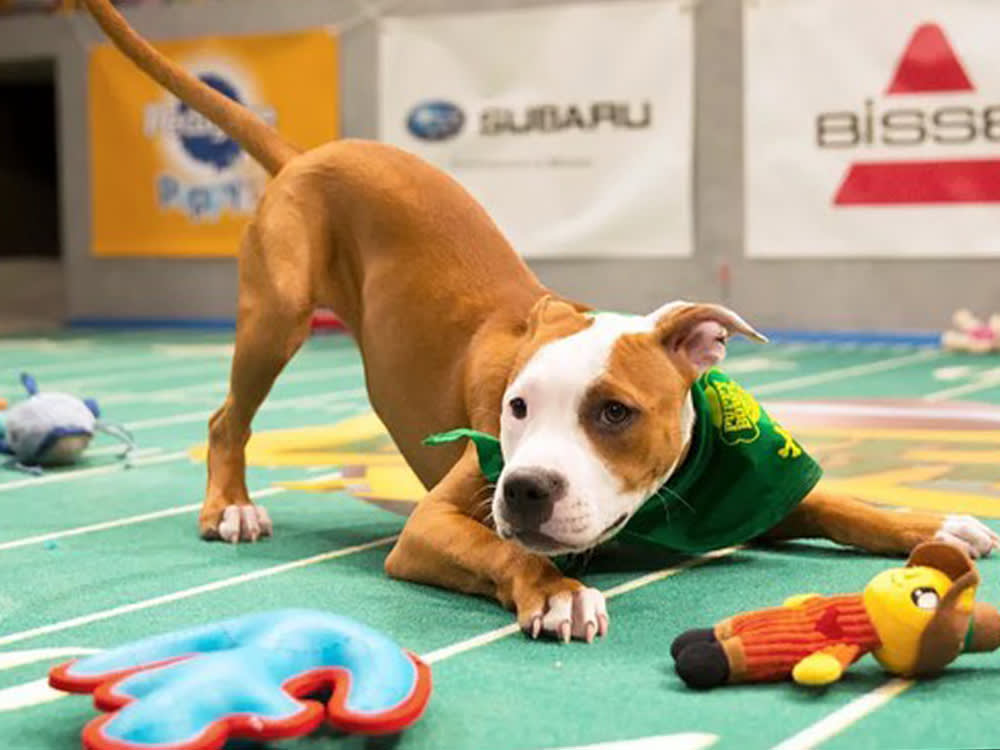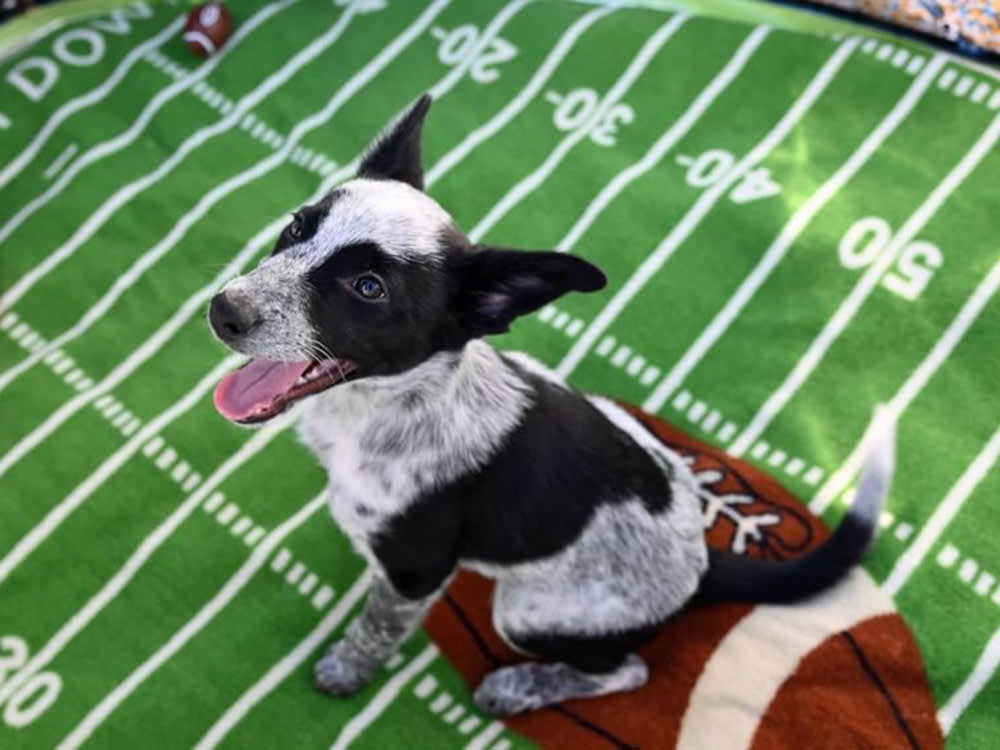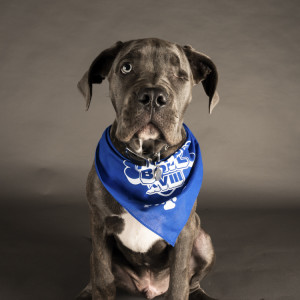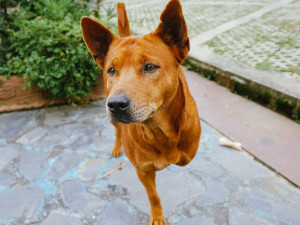Puppy Bowl Referee Dan Schachner is Still Making the Right Calls
A week before the big game, we hit the gridiron with the longtime official on adoptable puppies, special needs MVPs, and hosts Martha Stewart and Snoop Dogg.
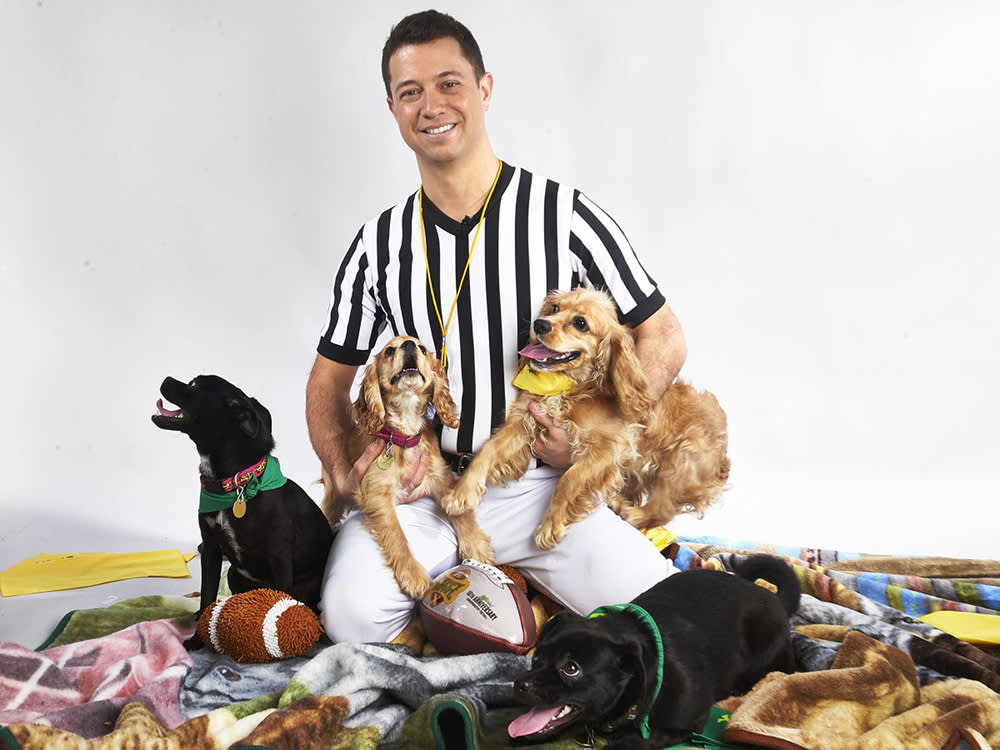
share article

Your pet wants you to read our newsletter. (Then give them a treat.)
For Dan Schachner, everything comes back to his love for animals. “People always ask me who I’m favoring in the human football game. And I usually go for whichever team has an animal in the title,” he says. Given this, deciding between the Bengals and Rams in Super Bowl LVI would seemingly be a tough call, but Schachner is quite adept in that department. As the official referee of the Puppy Bowlopens in a new tab, he is accustomed to moderating two teams of animals. For a decade, Schachner has been officiating Animal Planet’s annual cutesy counterprogramming to the big game. During that time, he’s seen the event grow from a fun distraction for dog lovers on Super Bowl Sunday to a national sensation.
Originally designed to raise awareness about adopting pets from shelters and rescues, the program has evolved into a goliath of animal advocacy. Each puppy involved in the Puppy Bowl is from a rescue organization and the program currently has a 100% adoption rate. Schachner champions this ideal, as he himself is a longtime dog foster. Before stepping onto the gridiron to oversee competition for the proverbial “Lombarky Trophy,” Schachner spoke with The Wildest on how the event has evolved over the last 10 years, his favorite moments, and why it’s important.
You’ve been the Puppy Bowl referee for a decade now. How did you initially get involved with the event?
Ten years ago, the Puppy Bowl was still around but it didn’t have as much of a human influence. They were simply training the camera on a bunch of dogs playing football as counter-programming to the Super Bowl. The ratings were slowly growing, but they realized over time that you needed a human to be a spokesperson for the dogs and to be a little bit more actively involved. The ref had started to bubble up as a character but it had just been played by a production assistant. Now they wanted to turn it into a real spokesperson for these animals.
When I auditioned, Animal Planet knew me because I had hosted several one-hour specials for them over the years. But there was no template for this; they just asked for a tape of what I thought an audition for a Puppy Bowl referee should be. So I went into dog parks and officiated random dogs and gave a motivational speech to them. I did it thinking I wouldn’t get the job because it was so absurd, but I think that’s why I did get it — I was a little irreverent. I took the game lightly but I took the adoption part seriously.
How has your role evolved since then?
What started off as a one-week gig the first year I was involved has ballooned into a five-months-of-the-year job. For those who don’t know the Puppy Bowl timeline, the planning starts in September. Then shooting starts in October, and November is spent in post-production and shooting for complimentary programming, sponsored ads, pregame shows, postgame shows, the adoption stories, and all of the other programming that goes around it. December and January are the press push and in February we air. So I rest when the Puppy Bowl is over much like Santa Claus after Christmas. Then we start up again in the summer. It’s been a dream job.
All of the puppies in the show are from rescues and you yourself are a longtime foster; was this a cause you were always interested in?
My family’s immigrants. They’re originally from South America where there are stray dogs everywhere, and it’s a very common thing. It’s still a problem in those countries. With that, there’s no buying dogs there. It just doesn’t happen. You either took in a stray or your neighbor had a litter and you took one off their hands. That was always ingrained in me. When they came to this country, it was the same thing. Of course, you’re going to adopt a dog or if a neighbor has a litter, you’re going to help them take one. There was no buy-in.
I know people look at breeders like they’re evil or shady but there are very legitimate and reputable breeders out there. I want to make that clear. However, when you look at the overpopulation numbers — which I started becoming aware of about 10 years ago — it is just so overwhelmingly clear that when these dogs don’t get adopted they meet a very sad fate. Hundreds of thousands, every single year. Those numbers have gone down a bit but still somewhere between 300,000 and 400,000 dogs, unfortunately, have to be put down each year. It’s sad.
Is that why you started fostering?
I always knew it was important, but I didn’t start fostering initially because my building here in New York didn’t allow it. Of course, now it does. It’s crazy to think of a building that forbids dogs now. I don’t know, eight years ago, my building was like “screw it, we can’t fight the tide” and started allowing dogs. That’s when I started fostering and now I’m on foster number 35. It’s just the greatest thing ever. I recommend it for anybody, especially if you only have limited space, like me. Fostering is one of the greatest things you can do and it addresses the overpopulation problem directly. I promise when you take in a foster, you are saving two lives. It’s not just the life you’re bringing in. You are literally making room in a shelter for a new dog to come in.
There are a few special-needs dogs featured in the event this year. Was this an effort to publicize less adoptableopens in a new tab puppies?
100%. We started it a couple of years back when we had a special-needs dog win the MVP — not that he didn’t deserve it; he did — and the response was overwhelming. His name was Humble and he was sight-impaired. Of course, the mission when we first presented him on Puppy Bowl a few years ago was that we need to get these dogs adopted too. The response not only justified and confirmed what we were doing, but it actually inspired us to put more special needs dogs out there because if this visually impaired dog can run a ball in for a touchdown, well, so could a three-legged dog.
I think we have our largest amount of special-needs dogs ever this year. I believe there are six special-needs dogs. And they’re out there to send a very serious message, which is if you need any convincing that a special needs dog is as capable as an able-bodied dog, watch them play football. That’s all you need to see.
This is the second year of the Puppy Bowl during the pandemic; how has it affected the filming process and logistics of getting the puppies to New York?
This year we’ve got dogs from 67 states and 33 shelters. Both are our most ever; it’s a very geographically diverse group. They come to us from all over the country and internationally. That’s been harder the last two years. Prior to that, we were squeezed into a Manhattan studio when crowd control was not a concern. Due to social distancing, we needed a bigger space to film when the pandemic hit so we found an old hockey arena in upstate New York just north of Albany.
We rented it out and it has been tremendous. It allowed us to expand the field, expand the waiting area, and keep everyone not just six feet, but 12 feet apart. Another benefit is everything is at a grander scale now. The lights are bigger, the ceiling is bigger and the field is bigger, which has allowed us to bring in more dogs. What I’ve noticed on a practical level is when these dogs get on the field and they've had a chance to be 12 feet apart in the waiting areas, they get on with less anxiety, less stress, and it has made it a much calmer experience.
We’ve mentioned a few times that you’re going on 10 years now as the Puppy Bowl ref. What are some of your favorite moments from the last decade?
The highlights are so many to name. Michelle Obama was on Puppy Bowl X with the White House dogs, Bo and Sunny. Last year, Jill Biden has there with their dogs. We’ve had Martha Stewart and Snoop Dogg on the last two years. Everybody wants a part of it, from politicians to celebrities. Every rescue in America would love to be on the Puppy Bowl now and we’d take them all if we could. We used to chase after the rescues when this first started; asking them to bring puppies to a random soundstage in New York to play fake football seemed like a crazy request. Now, we run out of room and have to turn shelters away because — as much as it hurts — we just can’t fit any more dogs on the stage. It’s been really great to see the whole thing evolve.
How has the game itself evolved?
I have come up with every penalty call you could think of. I have seen everything you could ever imagine. When I started this ten years ago, nobody thought that a puppy could kick a ball. We thought that the only way to score a touchdown was just to carry the ball into the end zone because that was all we had seen up until that point. But somewhere around Puppy Bowl XI, dogs started kicking the ball inadvertently, but it resulted in the toy crossing into the endzone. We’ve been able to construct penalties. We’ve been able to construct a whole really intricate rules system on how puppy football should be played based on what we’ve seen on set.
You mentioned the challenge early on acquiring the puppies and reaching out to the shelters. You now have a 100% adoption rate with all of the puppies involved. How proud of that are you?
We are so proud of that. Thankfully that has been the case since I started. When you have millions of viewers and you’re the second most talked about thing on social media after the Super Bowl, it’s not hard to get your puppies adopted. What we’re most proud of and what I’m personally most proud of is the impact on the shelters when the Puppy Bowl is over.
Again, if I throw a cute puppy on TV on a big day, like Super Bowl Sunday, it’s not too surprising that the puppy will find a home. That puppy is part of a litter, though. They have siblings that need adopting in that shelter where they came from. That puppy has a parent, usually a mother. The moms are often the last to get adopted because after they have their babies, unfortunately, puppies get swept up and the mom gets left behind. But the impact these shelters report to us after the show airs is so rewarding. Yes, of course, the Puppy Bowl dog got adopted, but so did their siblings. The parents get adopted. And they often see an uptick in people coming into that shelter overall.
You’ve introduced these ‘Adoptable Pup’ segments during the show with 11 shelters around the country, was this in response to that demand?
To give you the overview, our goal is just to get as many dogs adopted as possible. We want to squeeze in as many dogs into this three-hour program as we can. So the adoptable segment was an attempt to shine the spotlight on other dogs. To show their backgrounds. What kind of life did this dog have before being rescued? Was it abandoned on the street? Was its owner sick, and unfortunately couldn’t take care of them anymore. There are a bunch of different stories and every pup’s story is different. Getting to know their background allows us to show the rescue group, if they have foster parents, or if they have siblings that also need adopting. We started it last year and I’m really proud of it.
Where would you like to see the Puppy Bowl go in the future?
We’ve already gone from a two-hour show to a three-hour show so I’d like to see it become a four-hour show. I’d like the Puppy Bowl to be a year-round event because if dogs can play football, then they can certainly play soccer and they definitely run track so how about the puppy Olympics?
Puppy Bowl XVIII airs Sunday, February 13th at 2 p.m. EST on Animal Planet.
The Wildest will be hosting a watch party at Boris & Horton in New York Cityopens in a new tab featuring Dan Schachner as MC, providing color commentary and giving out prizes from Animal Planet, Whistle, Wisdom Panel, and more. Tickets are $20 and can be purchased here. opens in a new tabAll proceeds from ticket sales will go to Muddy Paws Rescueopens in a new tab.
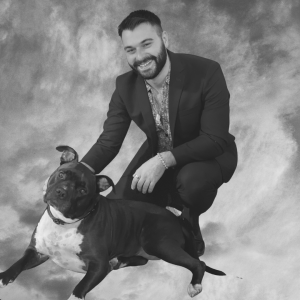
Sean Zucker
Sean Zucker is a writer whose work has been featured in Points In Case, The Daily Drunk, Posty, and WellWell. He has an adopted Pit Bull named Banshee whose work has been featured on the kitchen floor and whose behavioral issues rival his own.
Related articles
![A dog posing with one eye.]() opens in a new tab
opens in a new tabTale of the Tape: Team Fluff vs. Team Ruff
Introducing the 2022 Puppy Bowl starting lineups and the rescue organizations they’re representing.
![tripod dog / dog with three legs]() opens in a new tab
opens in a new tabWhy You Should Adopt a “Less Adoptable” Dog
Here’s why you shouldn’t rule out senior dogs, special-needs pups, bully breeds, or tripods.
